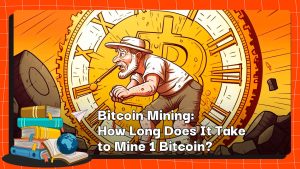You’ve probably heard about coin burning if you’re interested in cryptocurrency. It is a means of lowering a coin’s supply. Coin burning became popular in 2017 and has been nearly endlessly replicated since then. In the bitcoin sector, it is currently a standard practice.

The term “coin burning” conjures up images of an investor torching real cash. Of course, because digital currencies exist solely in a virtual form, this is not physically possible. Token burning occurs when the producers of a coin remove a specific number of tokens from circulation. Burning tokens serves a variety of goals, the most common of which is to reduce inflationary pressures in the market.
It’s similar to a publicly traded firm repurchasing stock. These businesses utilize the cash they have on hand to buy common stock, reducing the overall number of shares on the market. By increasing the value of outstanding shares, this method raises earnings per share. The ratio of net profit to shares rises.
This approach is not used by large blockchains like Bitcoin and Ethereum. Altcoins and smaller tokens, on the other hand, are frequently burned to regulate the circulating quantity, attracting additional investment.
How are cryptocurrencies burning?

Token burning can take many forms, but the end purpose is to reduce the total number of tokens available. While Cryptocurrency cannot be burned, it can be rendered unusable. All nodes can see token signatures, but they are permanently frozen and held in an irreversible public wallet called a “eater address.” The status of these currencies is published on blockchains.
Depending on their objectives, projects burn tokens in a variety of ways. After an ICO, some will use a one-time burn mechanism to remove unsold tokens from circulation (Initial Coin Offering). Others choose to burn coins in predetermined amounts and intervals. Binance, for example, burns tokens every quarter to ensure that the value of its native BNB currency is preserved.
With each transaction, Ripple burns tokens. When parties use XRP, the transaction fee is not remitted to any central authority. Instead, once a transaction is completed, they are sent to the address of the eater.
Tether (USDT) and other stablecoins create tokens when money is deposited and destroy them when money is withdrawn. Whatever method is employed, the end result is the same: burned crypto coins become unusable and are thus removed from the market.
What else is there to say?

The famous Proof-of-Burn consensus (PoB) mechanism emerged from token burning. It focuses on users that want to earn mining rights by burning their tokens.
While Proof-of-Work (PoW) remains the most viable option, thanks in part to Bitcoin’s backing, PoW consumes a lot of resources and can be very expensive. PoB addresses this issue by limiting the number of blocks miners can verify to the number of coins they’ve burned. On the surface, it resembles a virtual mining field, which may grow in size as more tokens are burned.
Is there a pricing difference?

There is no guarantee that the value of the token will climb immediately after a burn. Other facts about the crypto token may overshadow its significance at times. Investors may also be aware of an impending token burn and “price it in” at an early stage. Burning tokens may be advantageous if you want to raise the value of an item over time.
Those that stake tokens in a Proof-of-Stake mechanism might profit from burning them as well. Stake payouts may be more valuable if huge quantities of tokens are removed from circulation.
Some programs include burning events on a regular basis. One of the most important goals here is to persuade investors that there would be no inflation or over-dilution in the token’s future supply. As a result, the token’s utility as a “store of value” can be further enhanced.
In general, burning is a good approach for rebalancing an economy. However, it may not work with all Cryptocurrencies because some are better suited to act as a means of commerce and others as a store of value.
DISCLAIMER: The Information on this website is provided as general market commentary and does not constitute investment advice. We encourage you to do your own research before investing.
Join CoinCu Telegram to keep track of news: https://t.me/coincunews
Follow CoinCu Youtube Channel | Follow CoinCu Facebook page
Annie
CoinCu News



















